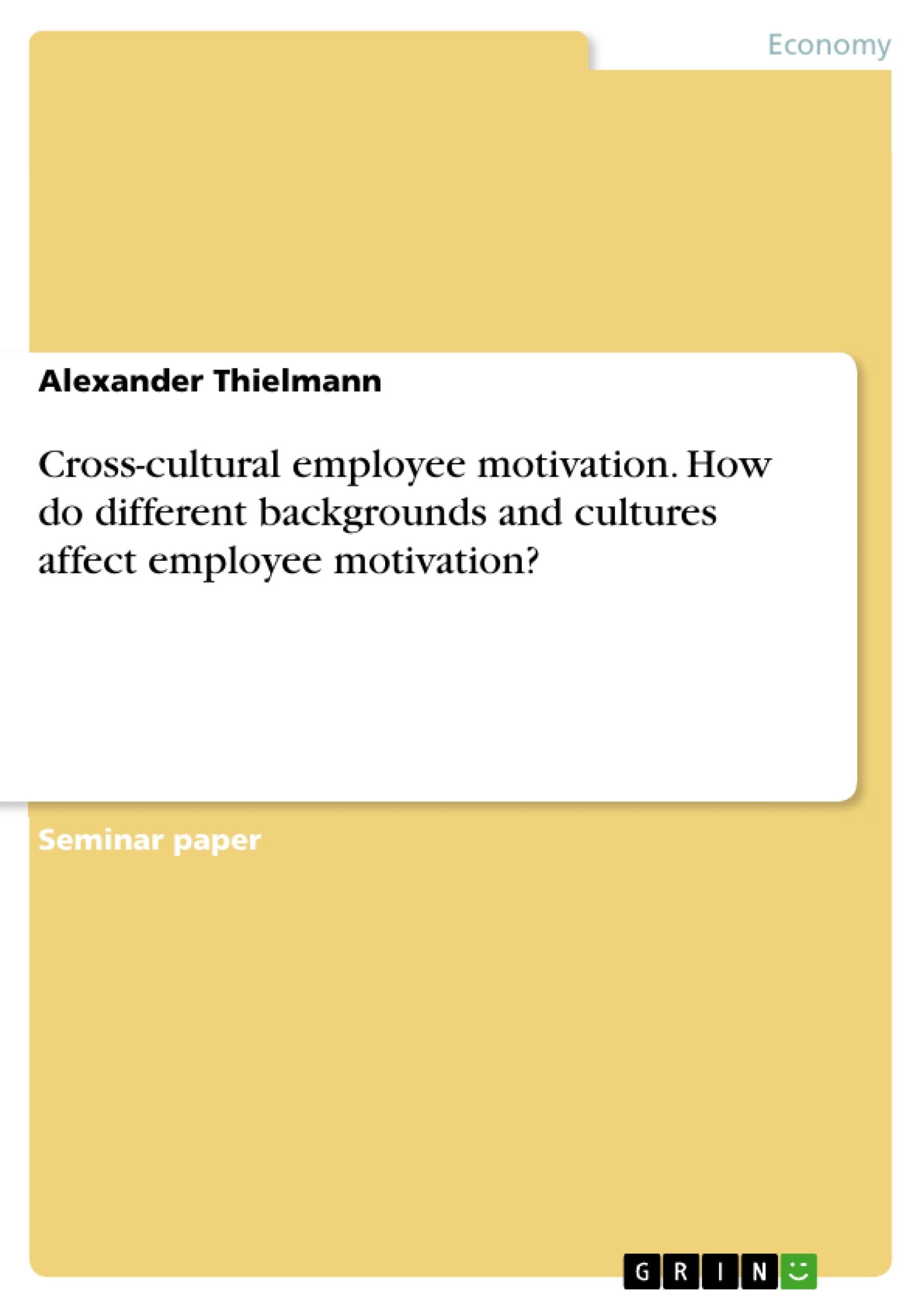This paper will elaborate different needs from people with different backgrounds and cultures and will demonstrate how these differences affect employee motivation. To do so, a short definition of the term "Cross-cultural" will be followed by an explanation of the cultural dimensions of Hofstede and Trompenaars & Hampden-Turner.
Subsequently, part three and four will focus on Employee Motivation. Firstly, it will be elaborated how motivation in general arises, followed by part four in which cross-cultural employee motivation is examined as a comparison between the different hierarchies of needs from Western and Asian societies. In a conclusion the key findings and implications for practice of this paper will be summarised.
Table of Contents
- 1 The increasing trend of globalisation and the importance of cross-cultural differences in employee motivation
- 2 Cross-cultural
- 2.1 Definition
- 2.2 Hofstede's cultural dimensions
- 2.3 Trompenaars & Hampden-Turner's cultural Dimensions
- 3 Employee motivation
- 3.1 Definition and Importance
- 3.2 The three sources of motivation
- 3.2.1 Obtain external rewards
- 3.2.2 Obtain internal rewards
- 3.2.3 Maintain desired self-concept
- 4 Cross-cultural employee motivation and Maslow's pyramid of needs
- 4.1 Maslow's pyramid of needs in Western countries
- 4.2 The Pyramid of Needs in Asian Cultures
- The increasing significance of globalisation and its effect on workplace diversity.
- The impact of cultural dimensions on employee motivation and perceptions of leadership.
- The influence of Hofstede's cultural dimensions on workplace dynamics.
- The application of Maslow's hierarchy of needs to understand cross-cultural employee motivation.
- The comparison of motivational needs in Western and Asian cultures.
- Chapter 1: This chapter introduces the growing trend of globalisation and its impact on the importance of cross-cultural differences in employee motivation. It highlights the increase in global trade and the importance of understanding diverse cultural perspectives in the workplace.
- Chapter 2: This chapter focuses on the concept of "cross-cultural" and its relevance to employee motivation. It defines the term "culture" based on the works of Hofstede and Trompenaars & Hampden-Turner. The chapter also provides an in-depth analysis of Hofstede's six cultural dimensions, exploring their influence on workplace values and dynamics.
- Chapter 3: This chapter delves into the concept of employee motivation. It defines motivation and explores its importance in the workplace. The chapter further examines the three primary sources of motivation: obtaining external rewards, obtaining internal rewards, and maintaining a desired self-concept.
- Chapter 4: This chapter examines the relationship between cross-cultural employee motivation and Maslow's hierarchy of needs. It compares and contrasts the pyramid of needs in Western and Asian cultures, highlighting the differences in their motivational drivers.
Objectives and Key Themes
This paper aims to explore the impact of cross-cultural differences on employee motivation in a globalised business environment. It examines how cultural dimensions, as defined by Hofstede and Trompenaars & Hampden-Turner, influence employee motivation and expectations.
Chapter Summaries
Keywords
This paper focuses on the key themes of cross-cultural communication, employee motivation, cultural dimensions, globalisation, Hofstede's cultural dimensions, Maslow's hierarchy of needs, Western cultures, Asian cultures, and workplace diversity. It aims to provide a comprehensive analysis of these concepts and their implications for effective management in a globalised business environment.
- Citation du texte
- Alexander Thielmann (Auteur), 2021, Cross-cultural employee motivation. How do different backgrounds and cultures affect employee motivation?, Munich, GRIN Verlag, https://www.grin.com/document/1283174



